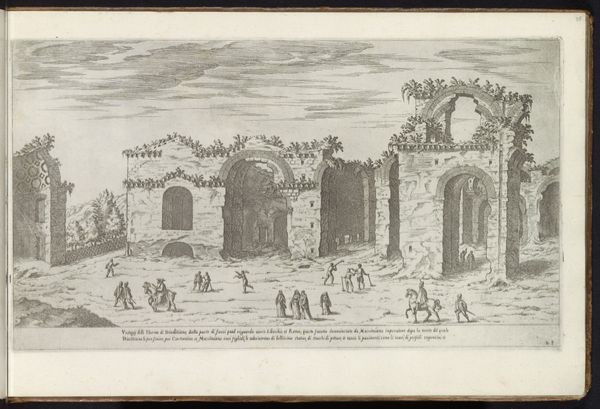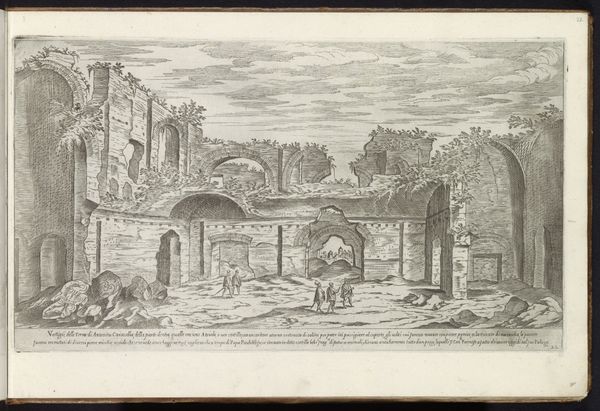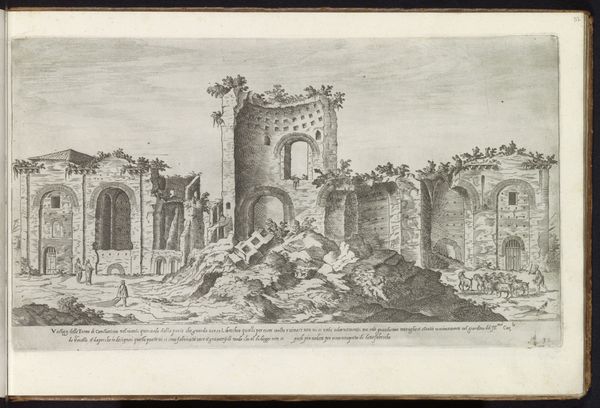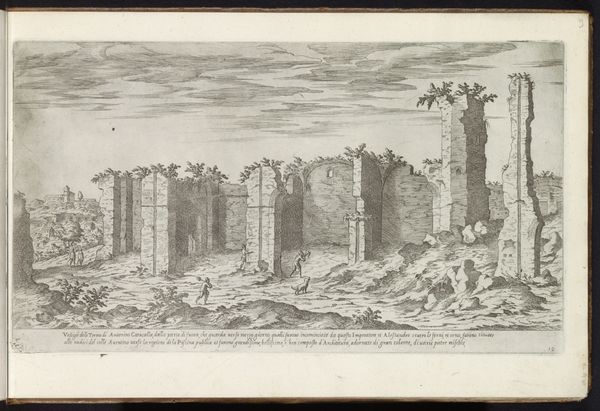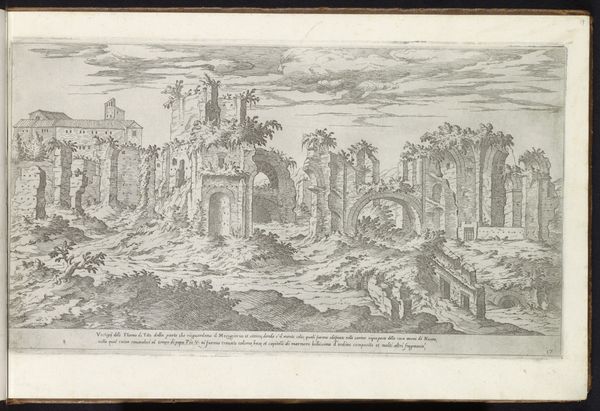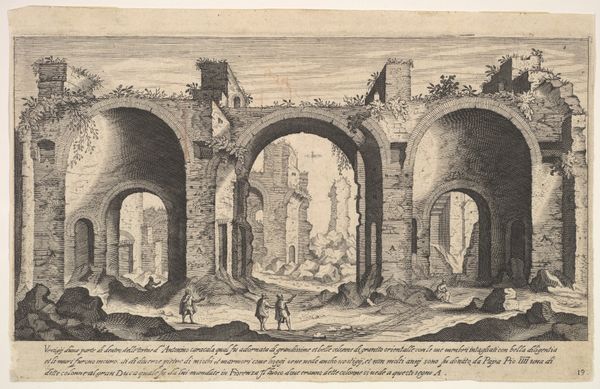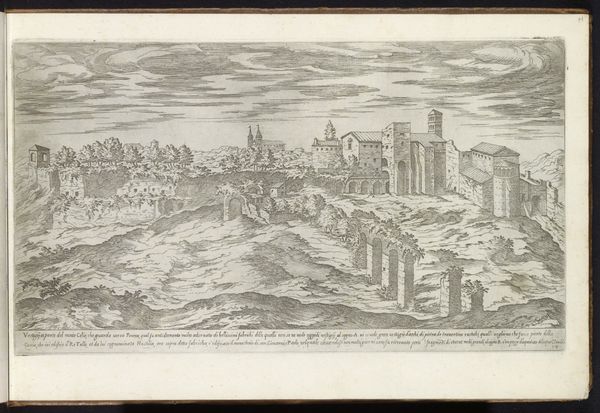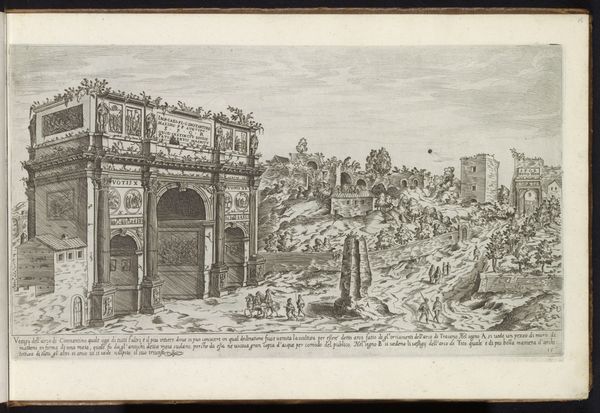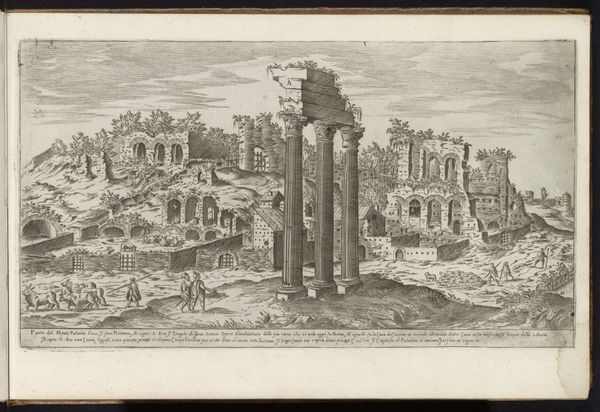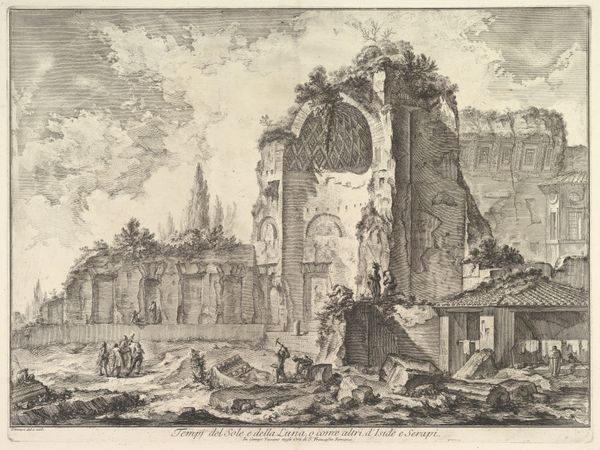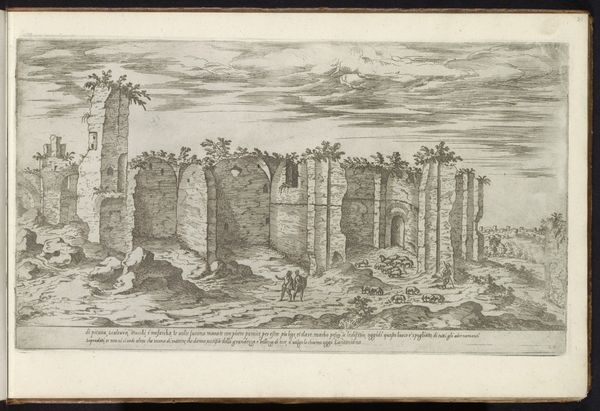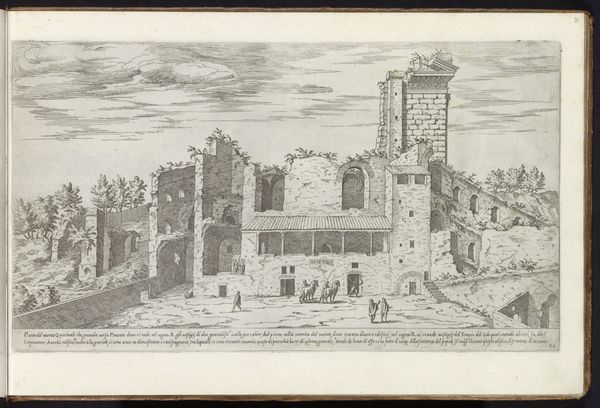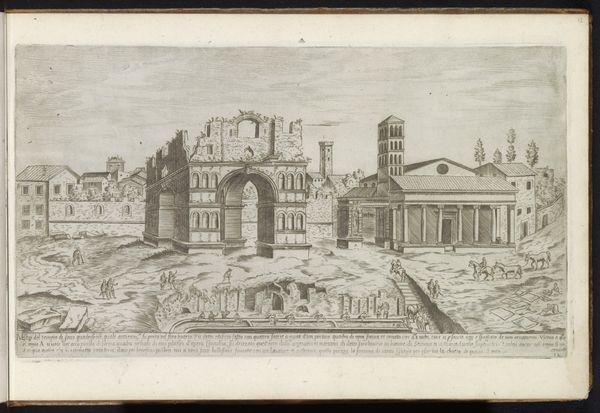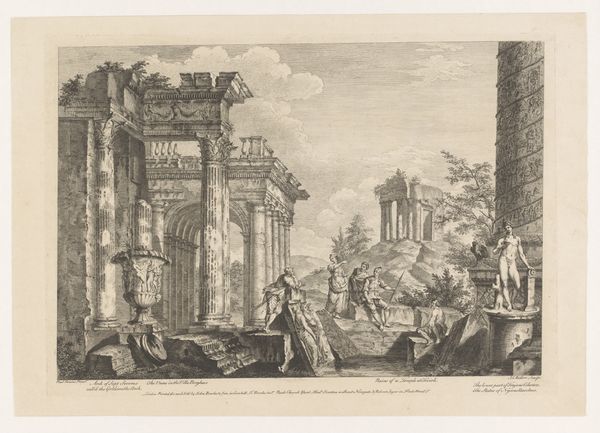
drawing, ink, pen, architecture
#
pen and ink
#
drawing
#
ink drawing
#
pen drawing
#
pen sketch
#
landscape
#
mannerism
#
ink
#
ancient-mediterranean
#
pen
#
cityscape
#
architecture
Dimensions: height 215 mm, width 381 mm
Copyright: Rijks Museum: Open Domain
Curator: Look at this striking depiction of ancient Rome. Étienne Dupérac created "Thermen van Diocletianus te Rome" in 1575. The medium here is pen and ink. Editor: There’s such an eerie tranquility in the ruins, isn't there? Despite the scale, the artist’s focus makes the entire thing feel incredibly still and somehow wistful. It is like a dreamlike moment suspended. Curator: Dupérac’s prints, including this drawing residing at the Rijksmuseum, played a significant role in shaping perceptions of ancient Roman architecture during the Renaissance. Consider the labor, time, and skill involved in producing this level of detailed documentation prior to modern technologies of image-making. The use of pen and ink shows careful and considered processes of drafting, replicating, and ultimately distributing this vision of Rome. Editor: It also brings into view something incredibly human, the interplay of nature reclaiming architectural grandeur with these little figures milling about— it all has this ghostly aura to it. I’m also drawn to how Dupérac depicts these ancient structures not just as solid masses but as something with organic, porous textures. I imagine it would be similar to encountering ruins, just slowly watching them crumble—it feels tragic. Curator: Absolutely. He’s documenting a physical and social process here – the evolution of built form back into material. It also reminds us of the consumption and dissemination of visual culture itself. Each line in the etching carries meaning and reflects that era's obsession with, and reconstruction of, classical antiquity. The medium, printmaking, allows Dupérac's view of the baths to be consumed in various spaces for diverse purposes. Editor: Right! What an absolutely wonderful method of experiencing history and its art. It also forces one to consider mortality...and decay. It makes me reflect on how impermanent these things truly are, grand ruins to mere fleeting moments—amazing. Curator: Indeed. The print bridges the gap between architectural study, artistic vision, and a meditation on the life cycles of civilisations.
Comments
No comments
Be the first to comment and join the conversation on the ultimate creative platform.
